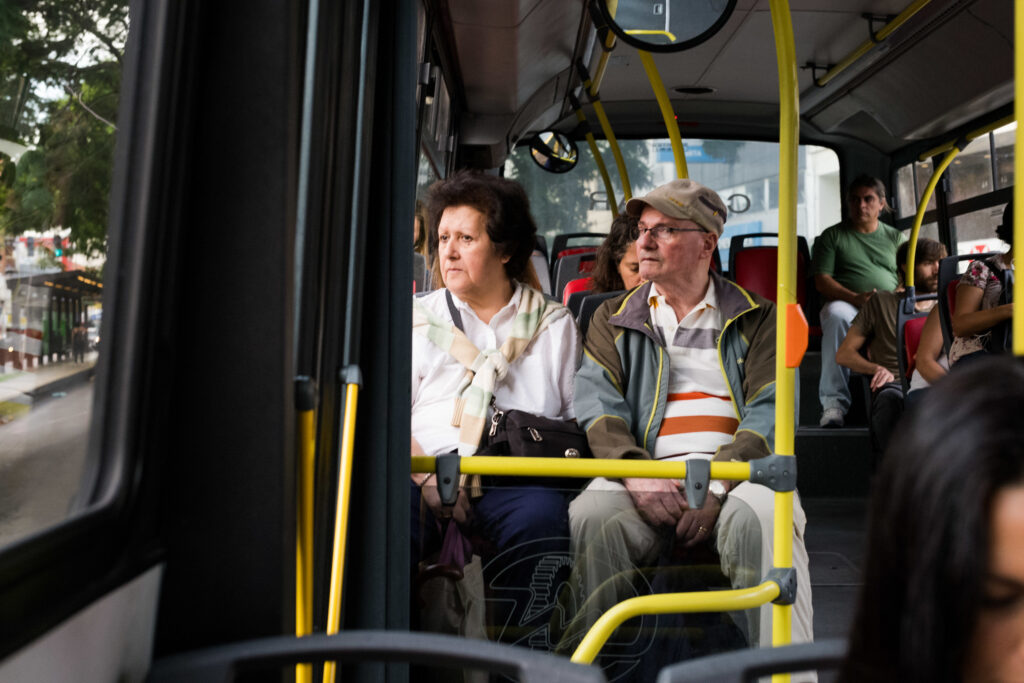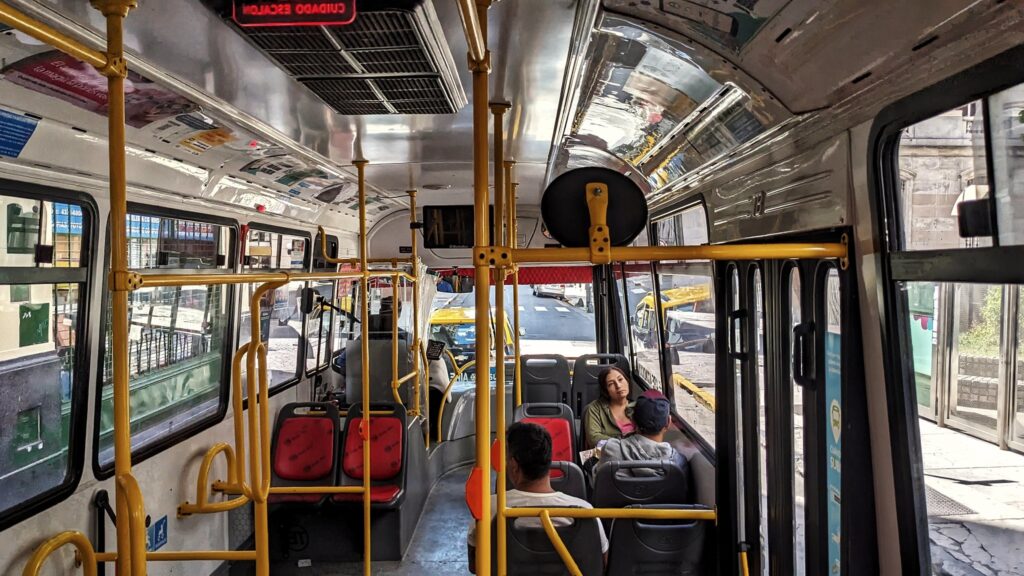Are you living or on vacation in Buenos Aires? Surely you have realized the magnitude of the city you are in: streets, avenues, highways, skyscrapers, palaces, monuments and an incredible volume of traffic. In this context, Buenos Aires offers us one of the best public transportation systems in the region, thanks to which you can cover all your trips at a reasonable price and without sacrificing comfort.
Yes, we understand you: the map of railways, subways and buses of Buenos Aires is a hieroglyph that is difficult to understand. You will also have realized that public transport is inevitable when it comes to getting around the City. Do you perhaps plan to allocate a large part of your travel budget to hiring car sharing and taxi services? What nonsense!
With a simple and economical SUBE card, you can travel on all means of public transportation in Buenos Aires, and thus save an incredible sum of money while touring this endless City. However, there are a series of important tips that we want to share with you to prevent cheap from being expensive.
What are we referring to? Take a look at the following article and learn how to travel with peace of mind on public transportation in Buenos Aires.
Tips If You Plan to Travel by Public Transport in Buenos Aires
Plan Your Journey Using Public Transportation
The public transportation map of Buenos Aires can be very complex to understand. Subways, trains, and buses go in various directions, creating a landscape that can be indecipherable to a foreigner.
For this reason, if you are a digital nomad, an expat, or simply a traveler who wants to use public transportation to save money, the first recommendation is to plan your route. Use tools like Google Maps to determine which mode of transport you should take, the distance to your destination, and the shortest or fastest route.
Train and subway drivers are not available for passenger inquiries, and it is rare to interact with them. However, it is common for passengers to seek precise answers from bus drivers about whether it is convenient to use that particular bus line for their journey.
Remember that thousands and millions of passengers need to travel daily, so planning these questions in advance will save time for both you and others.

Always Have Your SUBE Card Ready
In Buenos Aires and other cities in Argentina, at least for now (2024), the SUBE card is the only accepted payment method for public transportation: trains, subways, and buses.
You can register your SUBE card in your name (by registering your details on the web/app) or use another one that is not registered, although you might miss out on some discounts available only with a registered SUBE card.
You can top up your SUBE card from your mobile phone or at subway stations, and each time you travel, the corresponding balance will be deducted. This card has a credit system whose amount updates based on various economic factors; this system allows you to pay for a ticket even if your card has a negative balance, deducting the amount later when you recharge it.
In any case, your SUBE card is essential for traveling on any unit of the RED SUBE transportation system: trains, subways, and buses. It is also the key to keeping your travel costs in Buenos Aires economical and within your budget.
Board and Alight Only at Designated Stops and Stations
Believe it or not, this behavior issue is more common among Argentines than foreigners. Trains and subways, logically, only allow passengers to board and alight once they are at the designated platform and station. Until this happens, they will not open their doors, and no one can get on or off.
However, in the case of buses, the stops are located at various points in the City of Buenos Aires: streets, avenues, squares, parks, corners, etc. A common but incorrect and even dangerous practice is running to board a bus that has already left the stop where you should have boarded. While the driver might kindly allow you to board, it is not permitted and puts your life at risk.
The same logic applies to alighting from buses outside the designated stops. However, here the irresponsibility is more on the driver’s part, as the passenger depends on the driver to open the doors to alight. Alighting at non-designated stops is dangerous for the passenger, as it is done in a non-signaled area instead of a properly equipped station.
Do not be tempted to run after a bus to avoid missing it. New units will always come for you to board the next one.

Give Up Your Seat to Pregnant Women and the Elderly
A socially accepted practice in Buenos Aires when traveling by public transport is that the elderly and pregnant women have priority for seating.
When you see a pregnant woman or an elderly person looking for a seat, politeness dictates that you should stand up and invite them to take your place.
If you do not want to give up your seat for any reason, it is recommended to sit at the back of the bus. The elderly and pregnant women generally seek seats in the front rows, where someone will likely give up their seat for them.
Respect the Flow of Public Transportation
What do we mean by the flow of public transportation? We’ll take buses as the default case. When you board a bus in Buenos Aires, you do so through the front door. There you will pay for your ride by tapping your SUBE card on the reader and proceed to find a spot on the vehicle without obstructing the exit doors (middle and rear doors).
The flow in public transportation means passengers gradually move towards the back of the bus, away from the entrance, allowing new passengers to board and travel as well.
In the case of subways and trains, this logic is more flexible, as there are multiple entry/exit doors and different configurations.
Never travel obstructing an exit door, and if you have no choice but to stand there, show a willingness to step aside when someone needs to alight.
Do Not Play Music Out Loud
In no country in the world is it acceptable to play music at full volume on public transport. It is a selfish, inconsiderate act that shows a complete lack of respect for other passengers.
This applies not only to music but also to any content you consume on your mobile phone and, of course, to voice messages you exchange with your contacts.
Always carry your headphones without isolating yourself completely from your surroundings. Why? This connects directly with our next and final tip for traveling by public transport in Buenos Aires.

Keep Your Belongings Secure
If you have read our article on safety in Buenos Aires or heard some testimonials, you know that prevention is a lesson you must learn as soon as possible.
You should not think you are coming to a city with high crime rates. Buenos Aires is one of the safest cities in Latin America. However, this does not mean that crime in any form – theft, snatching, robbery, with or without violence – does not happen on the streets of Buenos Aires.
Unfortunately, public transport, especially buses, are settings where pickpockets and thieves operate. How? Their main targets are mobile phones, especially when the owner is distracted and overly focused on the screen. Once the thieves board the bus and notice this, they will take advantage of the next stop to swiftly snatch the phone, alight, and flee.
As you can see, this crime places a significant amount of responsibility on the victim, which does not mean reversing the roles of victim and perpetrator. We simply want to alert you to the possibility of such incidents happening if you do not maintain at least a minimal level of caution with your belongings.
- Protect your mobile phone when the train, subway, or bus reaches each station.
- Carry your backpack in front of you.
- Unless necessary for your trip, avoid using headphones and playing music.
Last Considerations
Embracing the public transportation system in Buenos Aires can be an economical and enriching experience, especially with guidance from ExpatPathways.
The cost-benefit ratio is impressive: for less than 1 dollar, you can traverse the city from end to end on a relatively satisfactory service.
However, while affordable, public transport requires certain precautions: plan your route, position yourself considerately within the vehicle, safeguard your belongings, and show respect to fellow passengers by keeping noise levels down and offering your seat to those in need.
By following these tips, you’ll navigate Buenos Aires’ public transport with ease and courtesy, enhancing your overall travel experience.
(Featured Image Source: Chuy Altamira/flickr.com)


